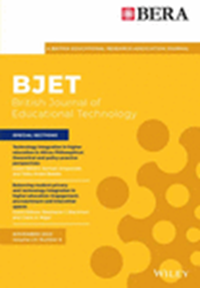Experiencing enjoyment in visual programming tasks promotes self-efficacy and reduces the gender gap
Abstract
Secondary school students (N = 269) participated in a daylong visual programming course held in a stimulating environment for start-up enterprises. The tasks were application-oriented and partly creative. For example, a wearable device with light-emitting diodes, (ie, LEDs) could be applied to a T-shirt and used for optical messages. Our research questions related to the control-value model of achievement emotions. We measured experienced enjoyment four times and examined the dependence of enjoyment on the individual tasks. Experience of enjoyment was also tested for the prediction of students' self-efficacy for programming. The results showed that momentary enjoyment was not significantly dependent on the task situation, but it was dependent on the general enjoyment of programming. However, students with lower enjoyment scores showed higher increases in enjoyment during the final tasks than those with higher initial scores. The emotion score of the girls increased more than those of the boys but the girls' overall enjoyment scores were lower than those of the boys. Students' self-efficacy beliefs of both genders increased over the course, and some of the differences in beliefs can be explained by the enjoyment of the course. In conclusion, our teaching approach seemed beneficial for the motivation to learn programming, particularly among girls.
Practitioner notes
What is already known about this topic
- Lower secondary students often report a lack of self-efficacy beliefs for visual programming, especially girls whose confidence in their abilities seems to be missing.
- Activities that show how programming can be used in everyday life or at work promote interest and enjoyment, especially among girls.
What this paper adds
- Experiencing enjoyment did not depend on individual task types (more structured vs. more open), but proved to be stable across all tasks.
- The experience of positive emotions in our computer science course had an impact on the secondary school students' self-efficacy beliefs.
Implications for practice and/or policy
- The combination of smart textiles and programming was viewed as a motivating learning experience with the potential to foster secondary school students' confidence and problem-solving skills in computer science.
- A guided sequence of learning to debug can provide a self-enhancing foundation for the students' own activities with following tasks that are more open and creative approaches.




 求助内容:
求助内容: 应助结果提醒方式:
应助结果提醒方式:


